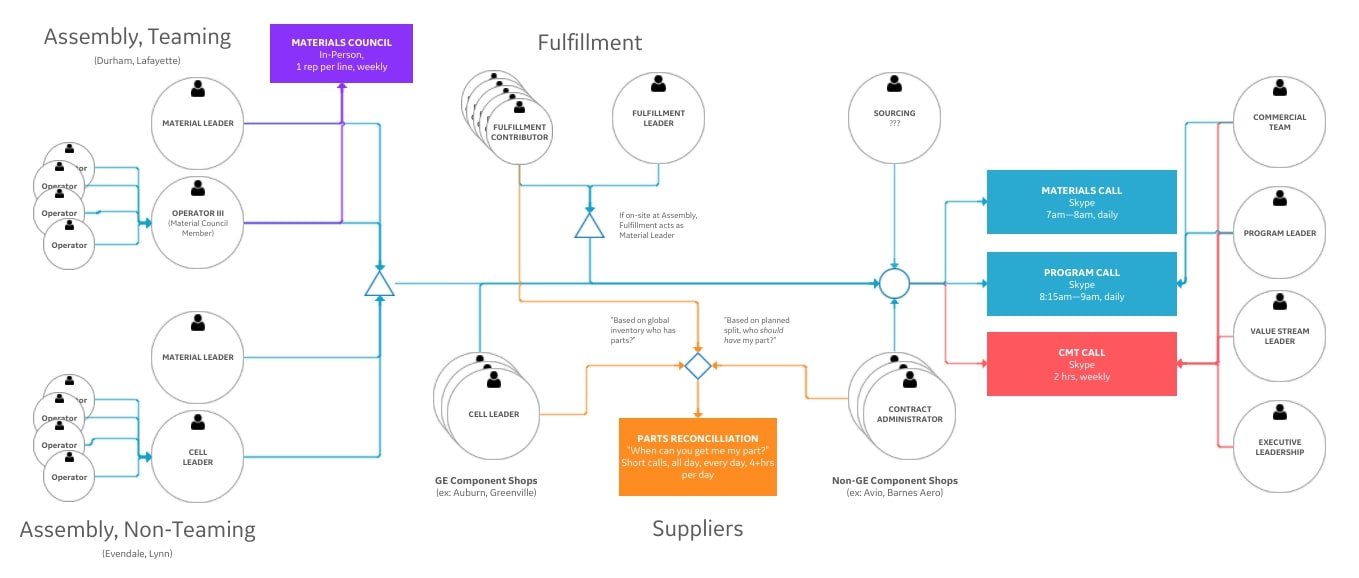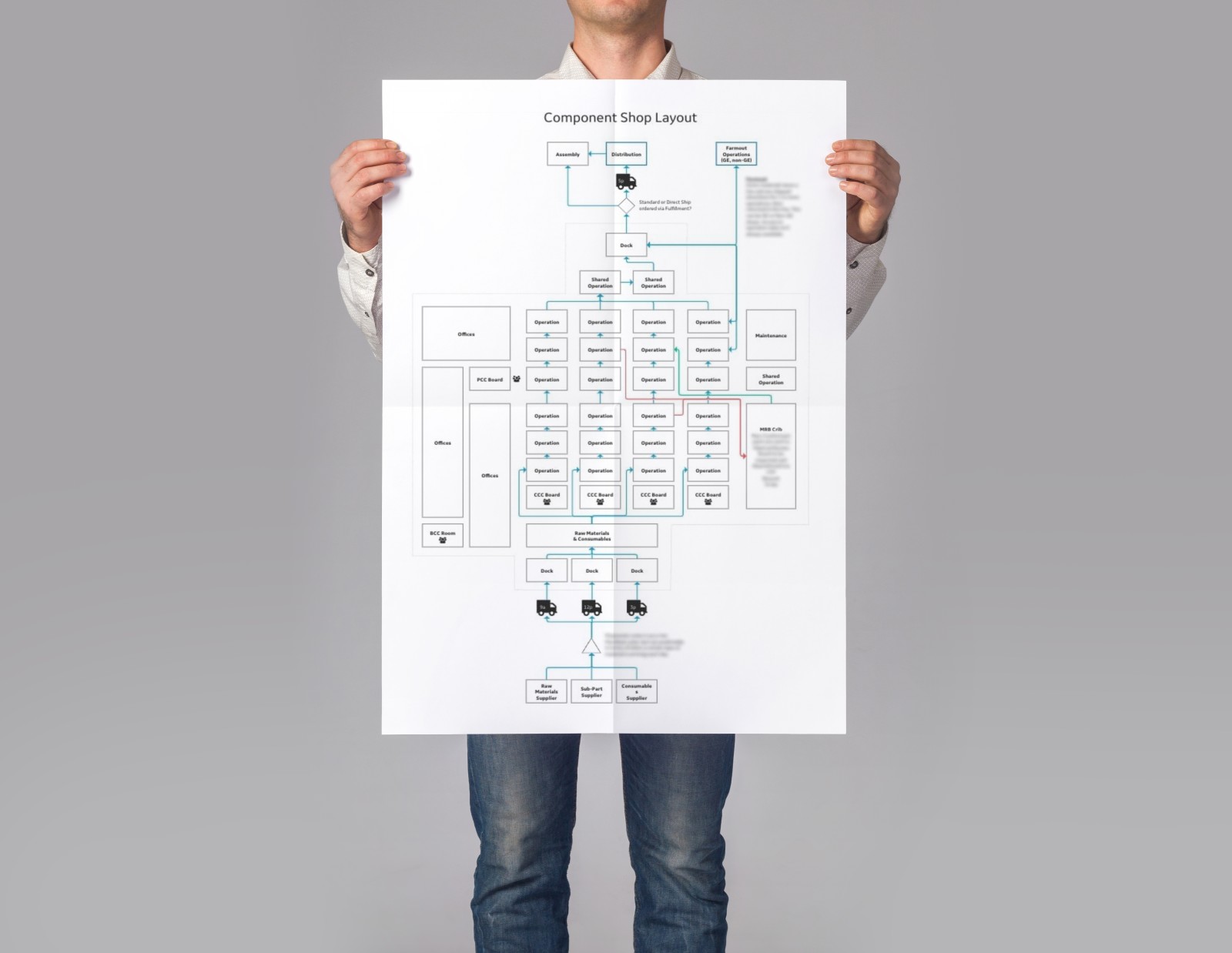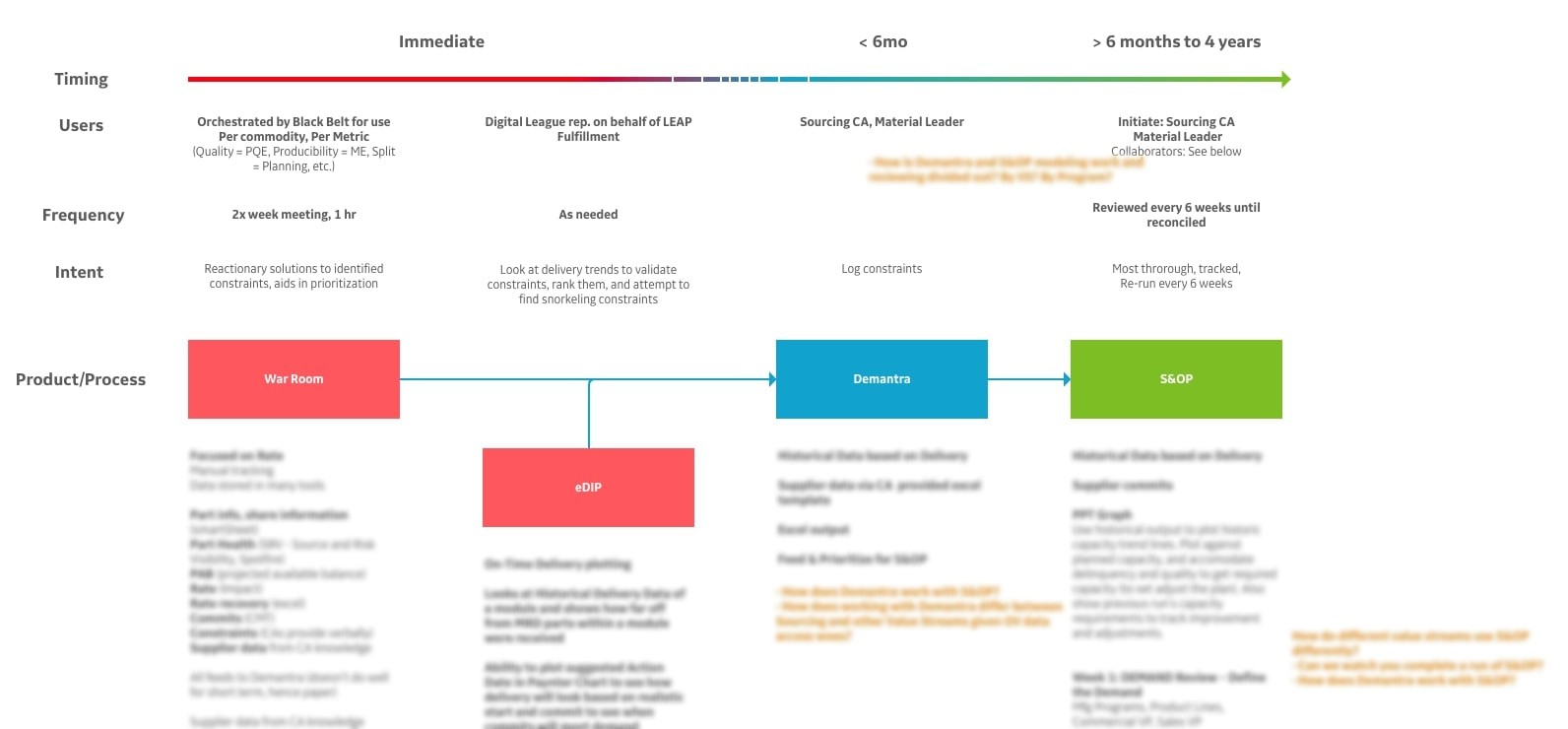

There was a need within GE Aviation's supply chain to map out business processes to increase on time delivery. The business knew that a service map was the first step in knowing how to apply Lean methodologies and get to know our actors. Along with an interaction designer I engaged in a two month research effort.

The ask was to map out the entirety of the supply chain from end to end. Stakeholders wanted plot pain points with direct impact on delivery. Additionally, we created empathy maps to capture how people were affected. Comprehensive process maps were created. People and their pains were added alongside process gaps. Databases and transactional systems were included as well.

Interactive versions of the maps were created so people could choose their context. People could choose to look at the supply chain through the lens of an org, a persona, a process, or a technology space. Black belts and Lean experts could focus on the processes. Leadership could focus on the people. Together, they could make plans that improved delivery time without negatively impacting people.
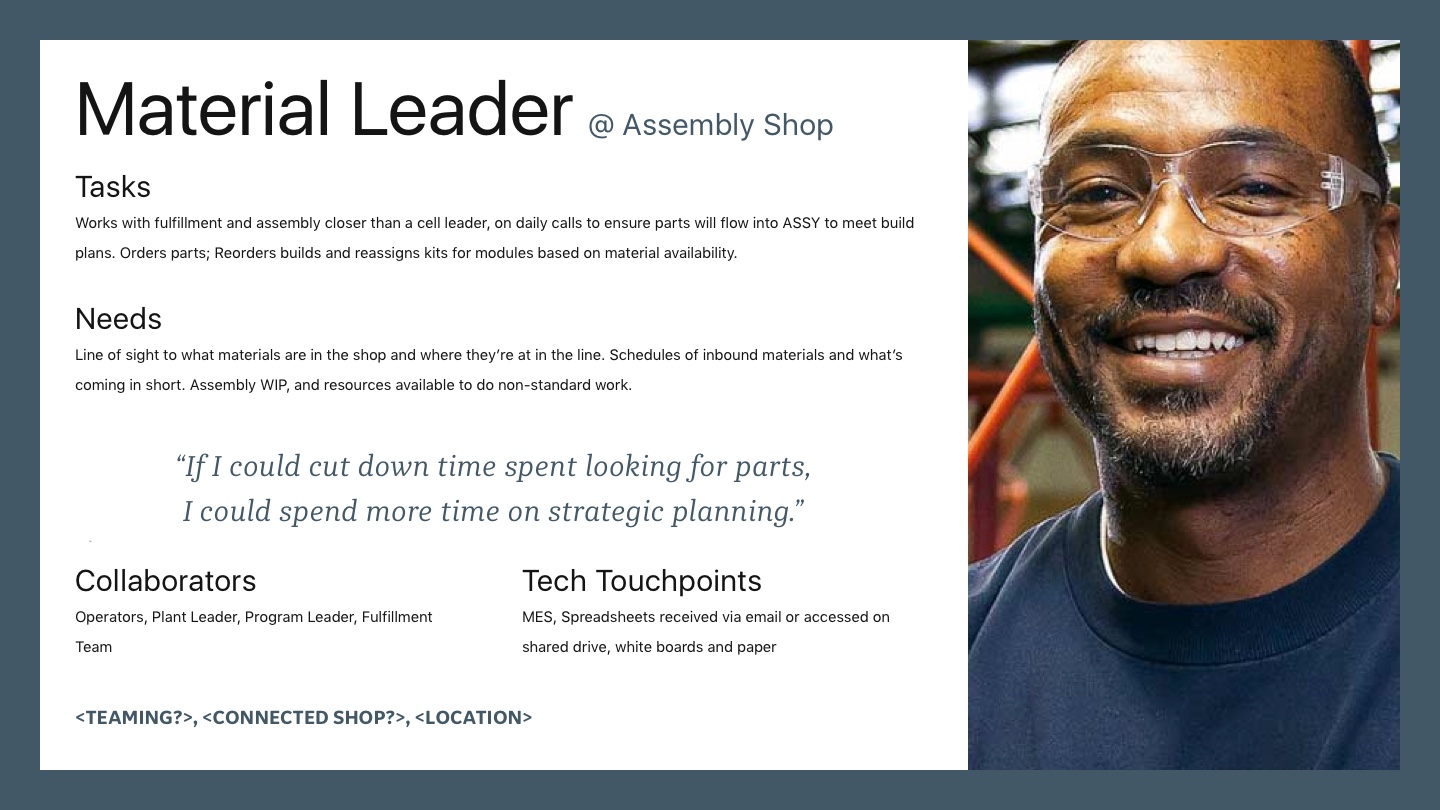
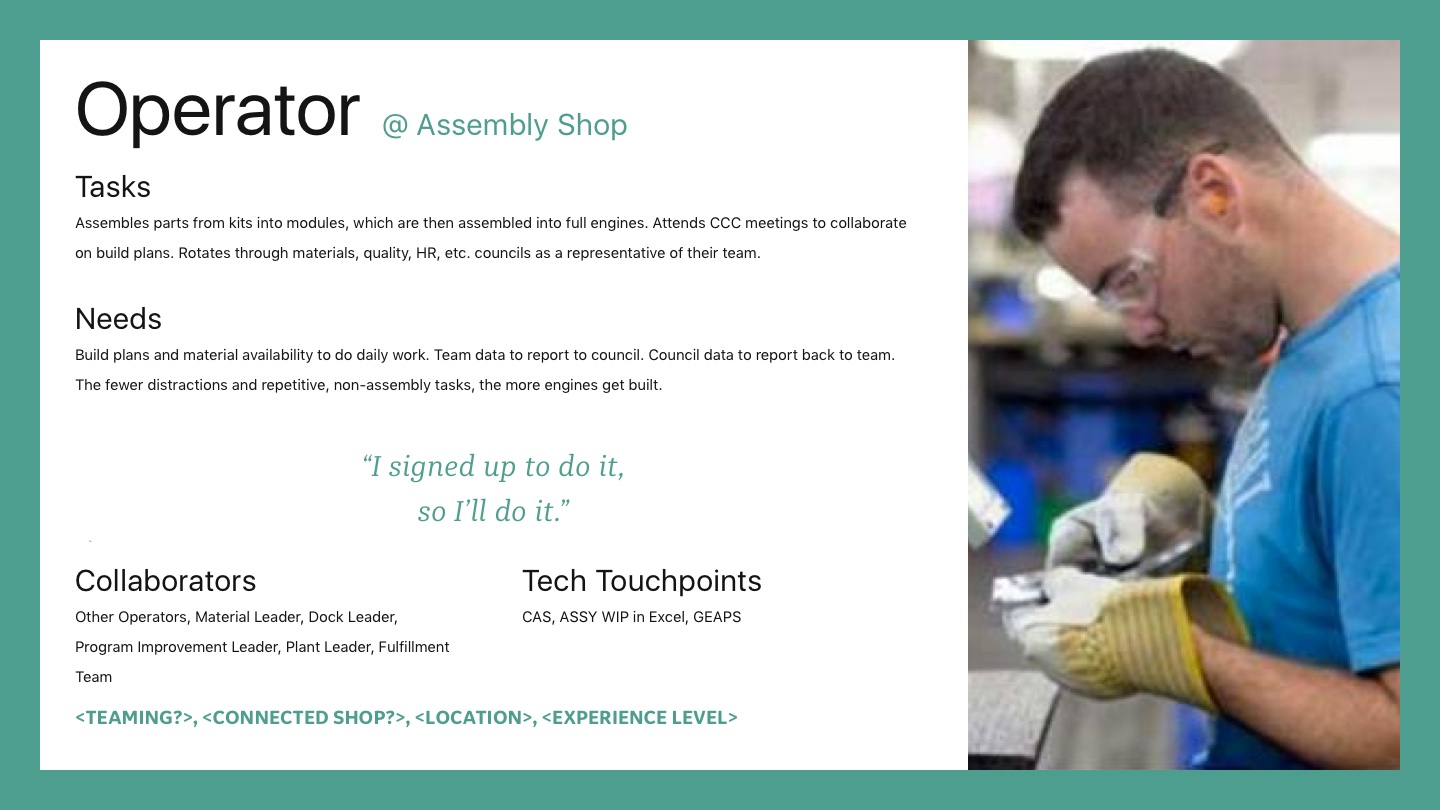
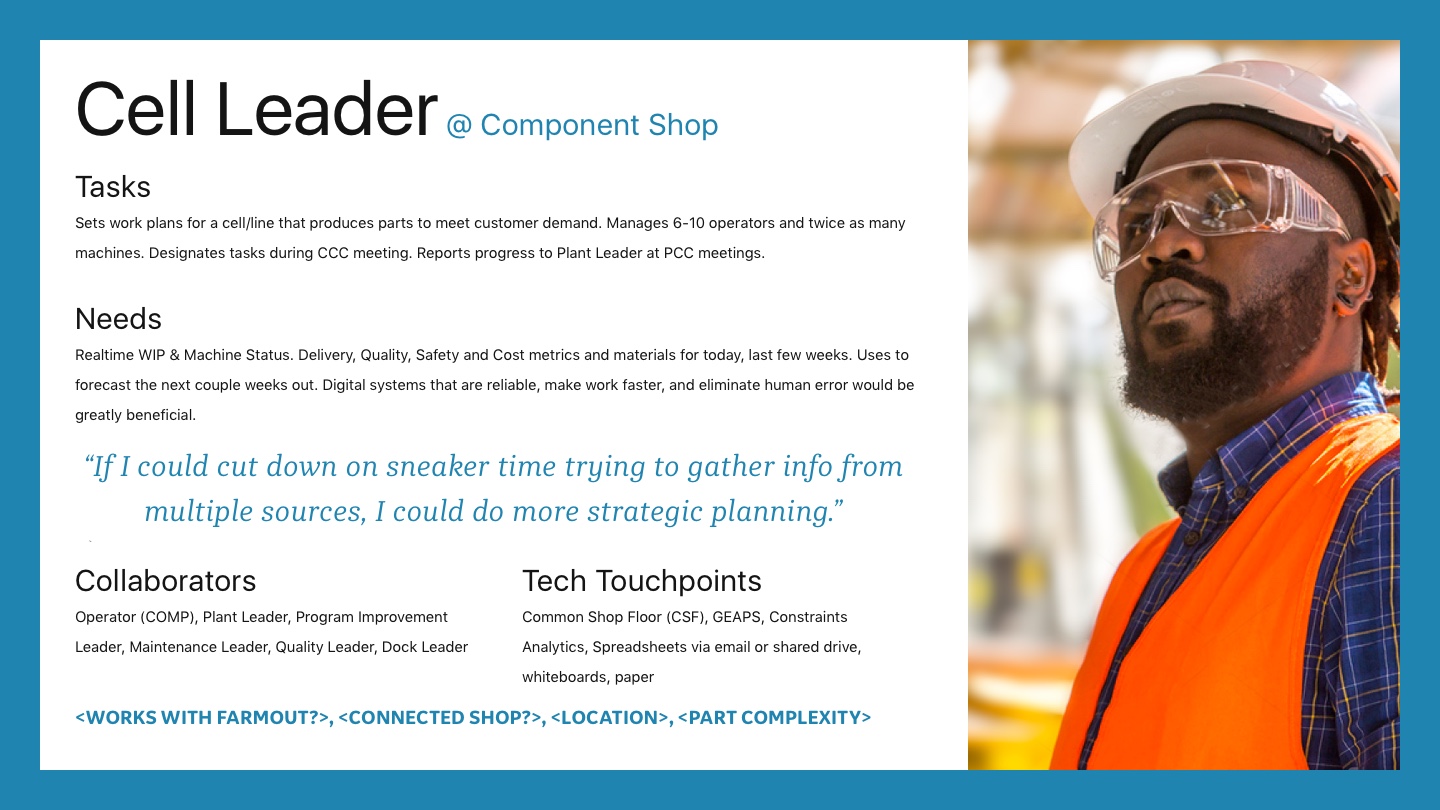

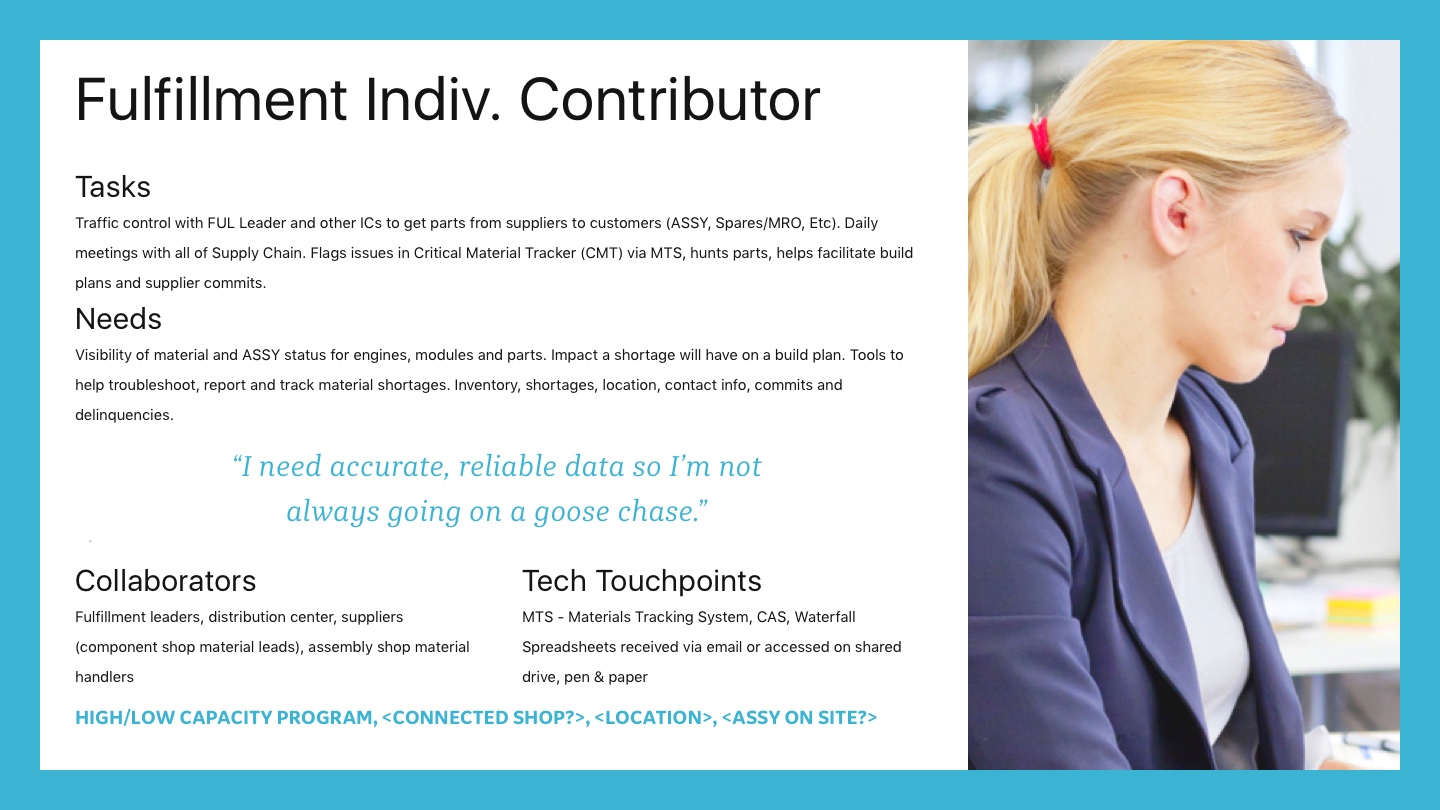
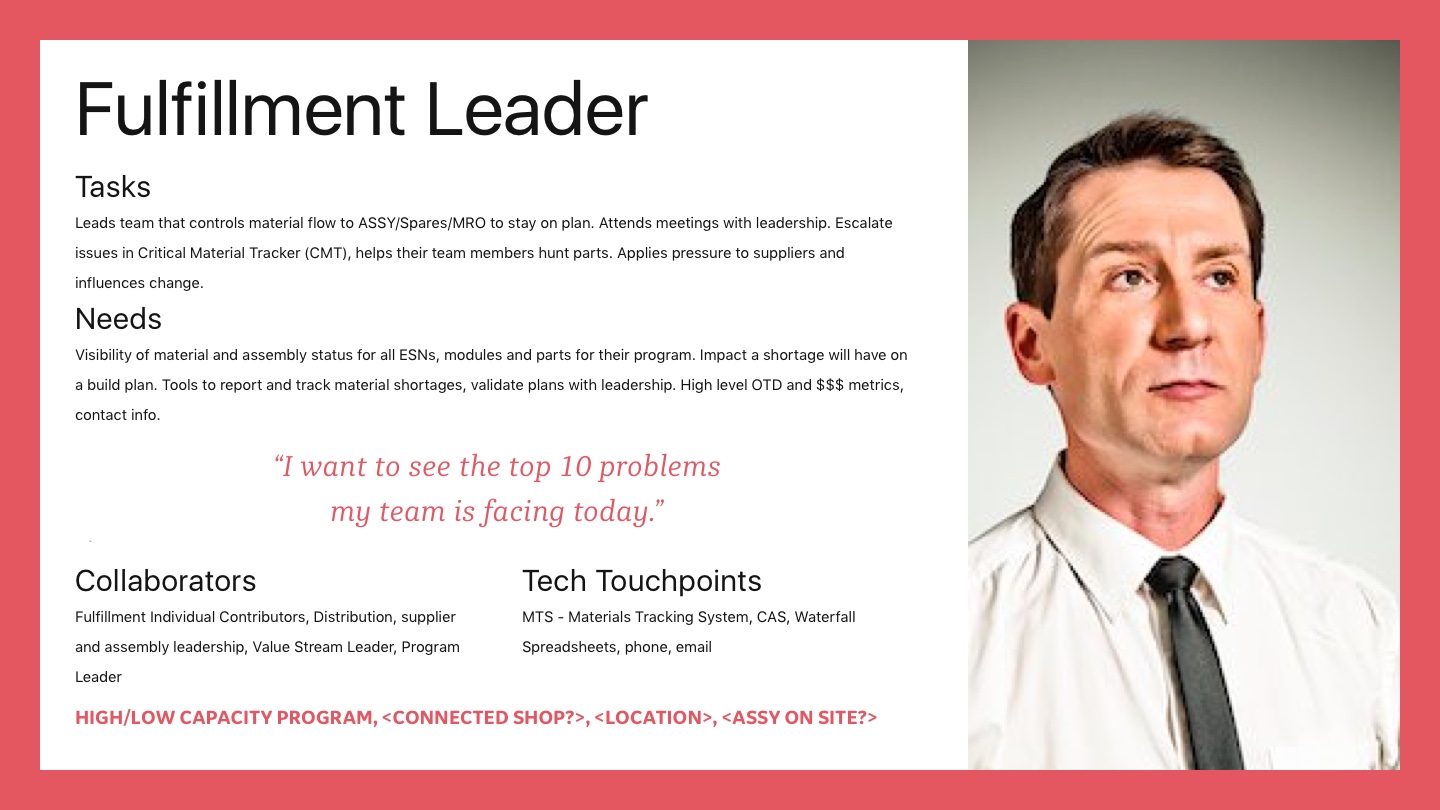
To make the research more actionable, a pain point matrix accompanies the artifact. The matrix plots pain felt against impact to delivery, vetted by stakeholders. It is paired with a set of recommended process improvements and digital solutions. It documents justification and expected outcomes should the recommendations become action items.
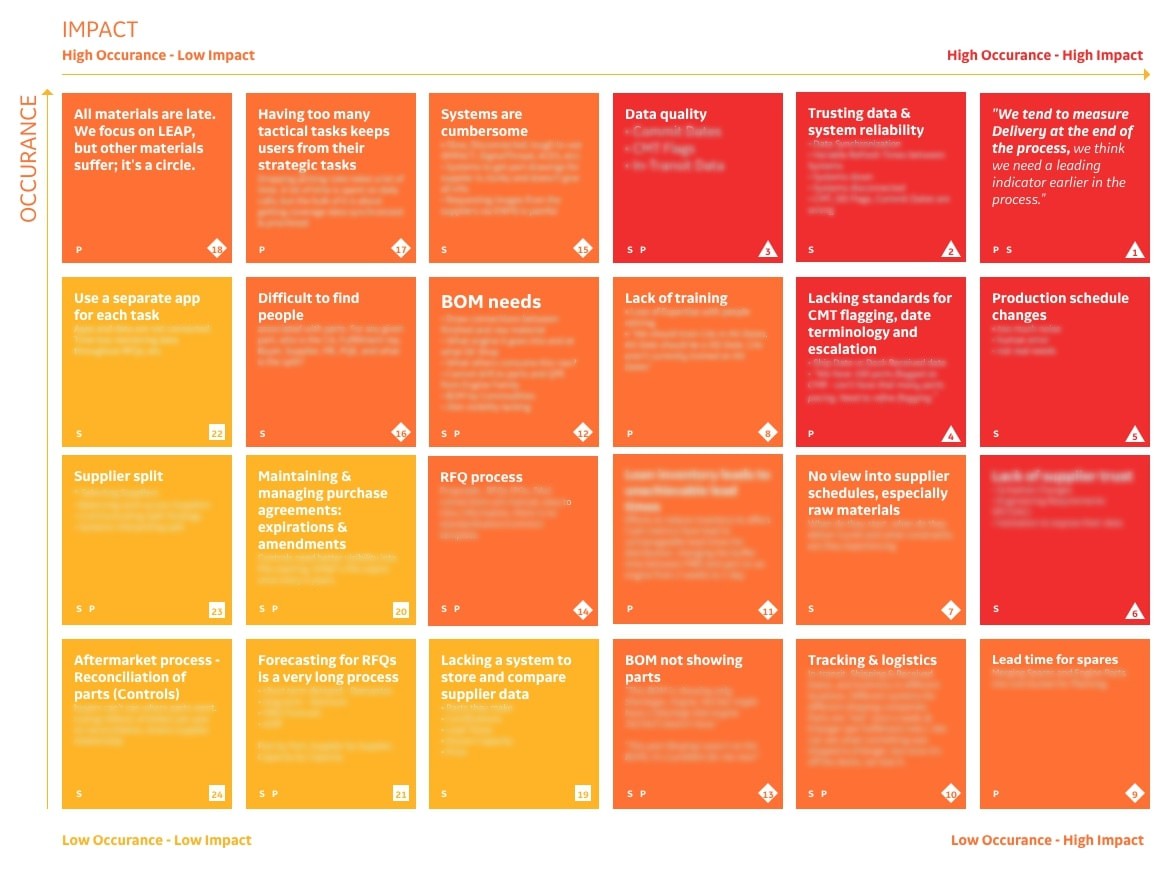
As of drafting this case study, many of these recommendations have come to pass. The strategic research and artifacts produced are iterated upon and revalidated. The partnership between shops, stakeholders, product owners, and UX is stronger than ever.
